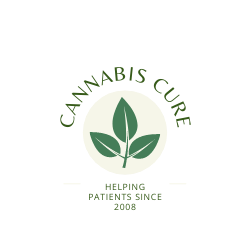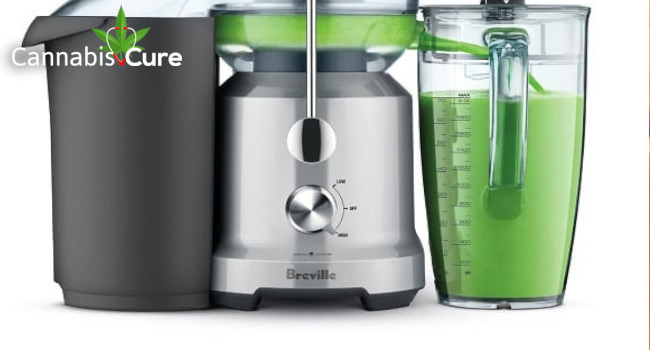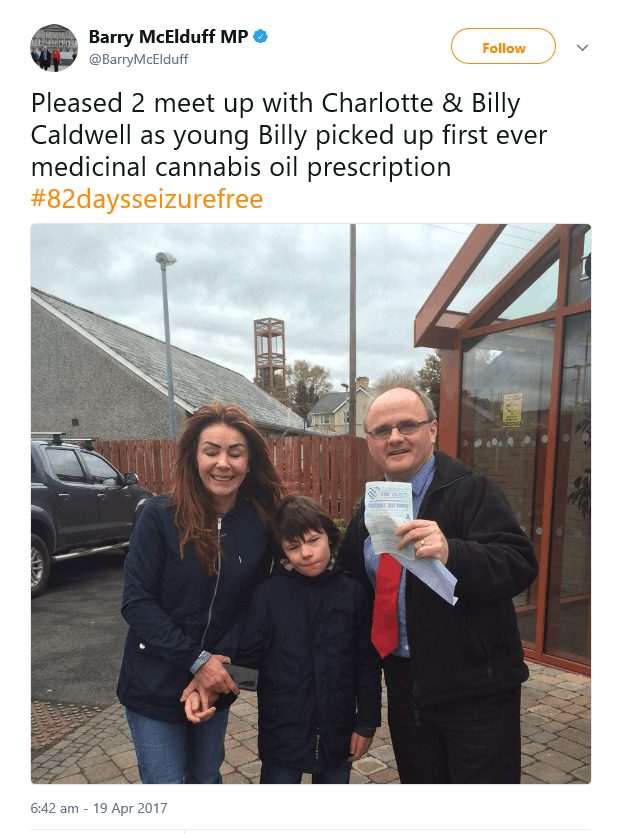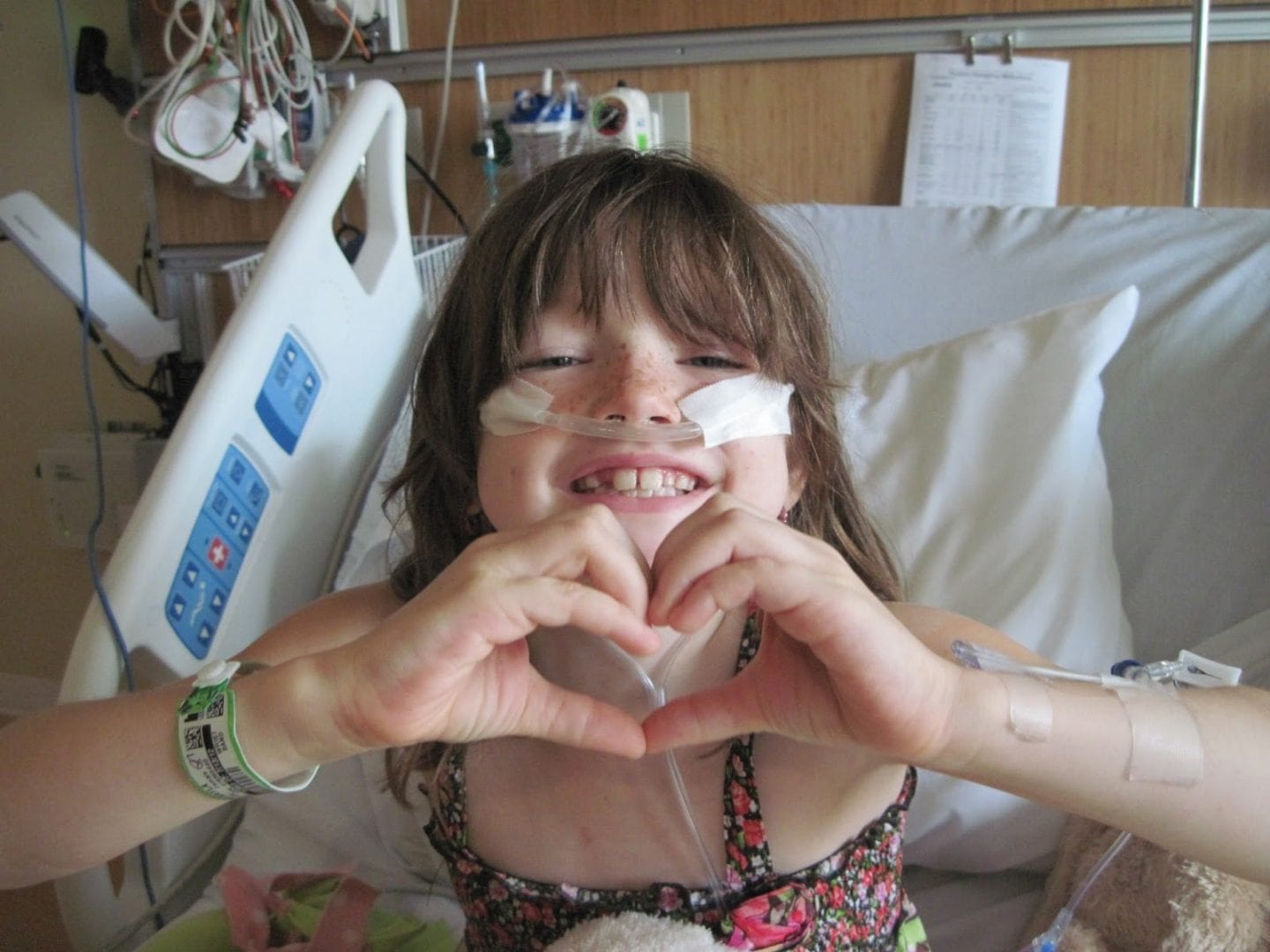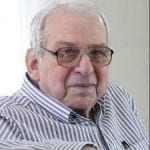Children and CBD Oil / Medical Cannabis
The History: Children and Medical Canabis
Up until prohibition cannabis was listed in the American medical pharmacopoeia and was commonly prescribed to be used to treat over 100 separate illnesses. By 1851 it was a recognized medicine in the 3rd edition of the U.S. Pharmacopoeia under the name of Extractum Cannabis (extract of hemp). There was no restriction on treating children with Medical Cannabis and it was regarded as benign and helpful for many ailments.

More than 20 prescription medicines containing cannabis were readily available in pharmacies right up until 1942 when cannabis was officially removed from the Pharmacopoeia due to prohibition. Today its benefits are widely recognized and it is becoming legally available in more countries as common sense prevails. Whilst Medical Cannabis for adults is now an acceptable form of treatment for a host of ailments, there is still controversy about treating children.
Most stem from ignorance but there are also valid arguments regarding the psychoactive effects of THC and the lack of studies relating to the effect of cannabinoids on the developing brain. There are many parents now who have recognized the benefits of paediatric cannabis use. There are many anecdotal reports of parents administering Medical Cannabis to children and gaining enormous benefits in treating conditions ranging from autism to cancer.
What is CBD?
CBD is the non psychoactive cannabinoid contained in the cannabis plant.
Research has led to exciting developments regarding its medical use, particularly in paediatric medicine, where the lack of any associated high feeling can positively assist doctors with regard to treating children and Medical Cannabis medications. CBD on its own has medical benefits, but the evidence does seem to point towards a full spectrum cannabis oil containing all of the over 110 available cannabinoids.
Cannabidiol CBD oil for children
More parents are now treating their children with Cannabidiol (CBD) oil for serious medical conditions.
Cannabidiol (CBD) oil contains none of the psychoactive compound known as THC and allows paediatric cannabis treatment without any associated high. Unfortunately, while many individuals and groups are calling for paediatric use to be legalized, medical bodies like the American Academy of Paediatrics remain opposed to treating children with cannabis.
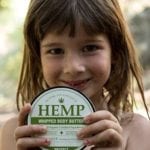
Instead, they call for increased scientific research into using cannabinoids to relieve symptoms existing drugs cannot help. This leaves parents in a difficult position as cannabis can undoubtedly assist children suffering from many conditions.
The U.S. government actually holds a patent on CBD as an antioxidant and neuroprotectant. CBD oil can be safely purchased online with no legal restrictions when it comes to treating children.
When choosing a natural option to give to your children, safety is obviously one of the top concerns. Cannabis is a safe alternative with zero recorded fatalities in thousands of years of human use.
Girl, 2, prescribed CBD, which will cost her family £1,000 a month, plus the added cost of a round trip from Belfast in Northern Ireland to London for every repeat prescription.
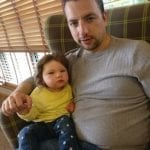
Jorja Emerson, aged 2, yesterday became the first child in the UK to be prescribed medicinal cannabis. Her parents desperately hope it will help the stricken two-year-old, who suffers up to 30 epileptic seizures a day. Despite being legalised, cannabis oil remains medically ‘unlicensed’ and doctors have been reluctant to actually prescribe it. Yesterday Jorja became one of a number of children to receive a prescription after her father persuaded a neurologist at the private Portland Hospital in London to help.
He said: ‘The NHS turned its back on us. But I knew when I first met this particular doctor, and she was finally telling me the same as doctors abroad, that Jorja is going to survive.’ He said the Portland doctor had asked not to be identified. Mr Emerson is paying £3,000 for a three-month supply and will have to fly to London for every repeat prescription. The CBD oil is being sourced from Canada and will be flown into the UK! He said: ‘It’s a lot of money, but it’s a choice between my daughter staying alive and dying. ‘It will take a while to kick in, but after a few days we will hopefully see a drop in the seizures, and then we will gradually wean her off the other medication. ‘I’m hoping that in about six weeks, she will be off all the other medication and not be having seizures.’
Portland Hospital said: ‘Consultants can prescribe medication that is clinically appropriate for their patients’ care. ‘Our pharmacy department is working with the Home Office and national licensing departments to ensure we are able to follow the correct regulatory processes for the safe supply of medicinal cannabis.’
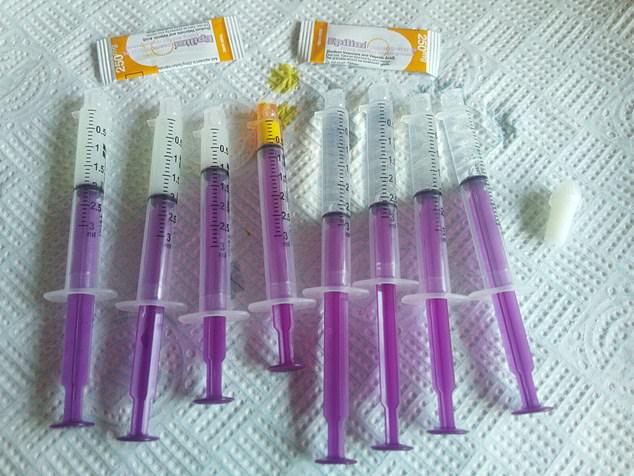
Jorja was born with a rare chromosome disorder, which causes developmental delay. Although not life-threatening, when she was ten months old, it triggered epilepsy – and now every seizure is potentially deadly. The little girl was labelled ‘terminal’ by doctors in Northern Ireland, where she lives in Dundonald, near Belfast.
If you need any advice or help regarding children and Medical Cannabis please use the contact form provided. We try to answer all emails within 24 hours and are happy to help and advise on all aspects of Medical Cannabis treatments in complete confidence.
Medical Cannabis prescribed to 11-year-old boy in the UK
Billy Caldwell from Castlederg in Northern Ireland is the first UK child to receive CBD on prescription.
Billy Caldwell had been travelling to the USA to get the medication for help to treat his epilepsy which at its worst saw him suffer up to 100 life-threatening fits a day. But when his supply of cannabis oil was about to run out and he was unable to make the return trip to Los Angeles, his mother Charlotte took him to see his local GP in desperation. Ms Caldwell, who has long campaigned for children to be given access to the treatment, added: “It’s a huge step forward. It’s an alternative treatment and it’s worked out well for Billy.” Dr Brendan O’Hare, realising the “unique and unusual” situation, opted to prescribe him the CBD oil – a derivative of cannabis containing the component cannabidiol which under MHRA guidelines doctors are allowed to prescribe.
Because CBD oil is legal in the UK, a doctor can give a “special” prescription for it to be manufactured or imported to the order. Ms Caldwell, who lives with her son in Castlederg in Northern Ireland, said: “With just a few days’ doses of Billy’s US medication left, I was getting desperate. In the end, I called my GP and gave him all our paperwork and he said he’d prescribe the medicinal cannabis for Billy and that’s exactly what he has done. We went down to our surgery and picked it up. It was as simple as that.”
The 11-year-old had a lesion in his left temple, which had brought back his seizures after eight years in remission, and the oil was helping to reduce the damage caused by it and had stopped his seizures for three months. Dr O’Hare said: “This is a unique and unusual situation.” He said he supplied a prescription and a letter as there was a “crisis” facing Billy, adding: “Whatever the rights and wrongs, we had a child here who had benefitted and the child’s welfare was paramount. On that basis, I issued a prescription and letter.
What is Charlotte’s Web CBD Oil Extract?
Basically, it is the name given to a Cannabis extract that is high in CBD and extremely low in THC content.
Charlotte’s Web is named after Charlotte Figi, a young girl diagnosed with a rare medical condition known as Dravet Syndrome at a very young age, and as a result, would routinely suffer over 300 grand mal seizures a week. Dozens of seizures occurred daily, and tiny Charlotte would suffer them for as long as 30 minutes at a time.
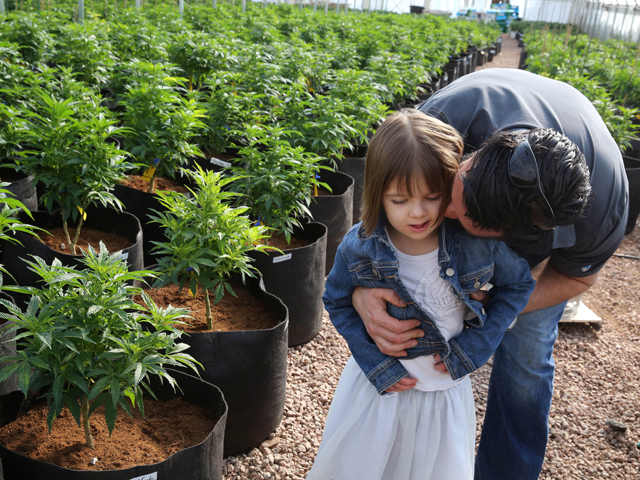
A cannabis-based oil made from a low THC, high CBD plant strain has now been called “Charlotte’s Web” after a young girl named Charlotte Figi whose parents use it as a treatment to successfully medicate Dravet Syndrome. Soon after birth Charlotte was having over 300 seizures every week and could no longer eat, talk or walk. After exhausting prescription medications and attempting restrictive diet plans her parents eventually found two doctors who were willing to treat Charlotte with cannabis. They used cannabis oil that was made from the highest concentration of pure CBD, and insignificant traces of THC.
Charlotte’s Web was created by the Stanley Brothers of Colorado and is marketed as a dietary supplement in the United States. However, this was to exploit a loophole and enable children to obtain the High CBD content extract. The cannabinoid ratio is important because CBD has no psychoactive effect. Also, the low THC content of this strain means it is now legal in certain states in America, as well as many nations around the world.
Within a short period of time, Charlotte was almost completely free of seizures (she suffered just 2-3 per month in her sleep compared to 200+ per week), and she is now able to look forward to a relatively normal life. Her physical development is improving, not only can she walk normally, but she can now also ride her bicycle. Her speech is also developing and she is able to feed herself. Now around 180 children in Colorado receive Charlotte’s Web treatment for seizures.
Children and Medical Cannabis treatment for seizures
Cannabis has been found to greatly improve the incidence of seizures in children.
Amy Brooks-Kayal, MD, chief of paediatric neurology at Children’s Hospital Colorado and professor of paediatrics, neurology and pharmaceutical sciences at the University of Colorado School of Medicine. Dr. Brooks-Kayal is a pediatric epilepsy specialist and past president of the American Epilepsy Society when asked about treating children with marijuana: “As medical providers in the neuroscience field who specialize in the care of children with epilepsy, the epilepsy program team at Children’s Colorado understands first-hand the medical complexity of epilepsy and the difficult decisions facing people with epilepsy and their families.
The stories of families eager to try medical marijuana are incredibly moving and completely understandable -because any parent of a child with such a life-altering condition would do everything in their power to make their child better.”
Medical Cannabis Production Is Helping Jack Shepherd’s Son
Medical cannabis production in the UK is giving hope to thousands of patients.
The Mother of Coronation Street (a popular UK TV show) star Jack P. Shepherd’s son has spoken of the crippling pain their eight-year-old child is suffering and her hopes for children and medical marijuana.
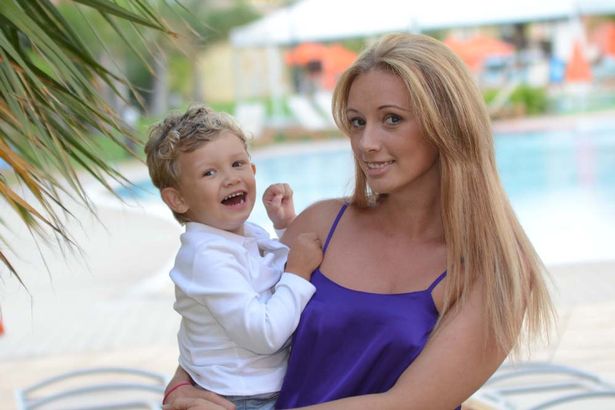
Greyson Milewski has incurable alternating hemiplegia of childhood (AHC)
Alternating Hemiplegia of Childhood (AHC) is a rare neurological disorder in which repeated, transient attacks of hemiplegia (paralysis of a portion of the body, including the face) occur. It paralyses his body and leaves him in agony. In recent months the attacks have worsened and now occur every day.
Speaking Of Her Son’s Condition, Mum Sammy Stated “If you saw what Greyson goes through daily, it’s heartbreaking. I don’t want to have to keep him cooped up, it’s really sad for him.”
Sammy says her son’s seizures come in one of two ways – his body can go limp and stay that way for up to three weeks or his body tenses up so much that he needs medication to relax the muscles. But there is now hope as Greyson is set to begin medical cannabis oil treatment after a change in UK law making the drug available through specialist doctors.
What is Alternating hemiplegia of childhood (AHC)
This is a neurological disorder that usually affects children before 18 months of age.
Classic AHC causes recurrent episodes of paralysis (hemiplegia) that involve one or both sides of the body, multiple limbs, or a single limb. The paralysis may affect different parts of the body at different times and maybe brief or last for several days. A characteristic feature of AHC is that symptoms disappear during sleep and return upon waking. Many affected children display some degree of developmental delay, abnormal eye (oculomotor) movements, uncontrolled limb movements (including ataxia, dystonia, and choreoathetosis) and seizures.
Children and Medical Cannabis treatment for cancer
Mykayla Comstock was diagnosed with leukaemia in 2012, aged seven years old.
When she first began traditional cancer treatment, she was unable to eat and was in a lot of pain due to chemotherapy and steroid drugs. While the chemotherapy helped reduce the level of lymphoblasts for a few days after treatment, they would soon spike up again.
The Comstocks researched and began administering cannabis medication. Mykayla now takes one gram of cannabis oil every day. Half in the morning, and a half at night. Her parents stated:
“Instantly she was able to eat again. That was the first benefit that we noticed. She was happier, she smiled and laughed constantly. We loved it!”
One week after we began the oil treatment Mykayla’s physicians notified us that her leukaemia had vanished from her bone marrow and blood! She was in remission.
Never again will I fear cancer. We found the answer for children and medical marijuana! Mykayla is currently 6 months into the intense treatment part and has never used any pain relievers (not even Tylenol) and has only had to take anti-nausea medication a few times.”
Mykayla is still cancer-free several years after her initial diagnosis. She has been off chemotherapy treatments and still continues to take cannabis oil regularly.
Cannabis is not a miracle cure and in the case of Cash Hyde it sadly did not save his life.
However, medical marijuana use demonstrated improved quality and length of life.
Cash was diagnosed with a Stage IV brain tumour at only 20 months and underwent emergency brain surgery, chemotherapy and experimental stem cell therapy to eliminate the 4.5cm tumour.
Doctor’s were only able to remove 10% of the tumour with surgery and the mass spread to his optic nerves, causing temporary loss of vision post-surgery.
Doctors had to tell the Hyde’s that Cash would either die of organ failure or a drug overdose. Chemotherapy was successful in decreasing the size of the tumour, but the aggressive nature of the treatment was difficult for the infant to handle.
The high doses of pain medication were ineffective and he was unable to eat due to nausea and vomiting.
Two weeks after beginning cannabis oil treatment, Cash began to eat, smile and laugh again. He was able to replace seven different pain medications for 0.3 millilitres of cannabis oil. As his parents explain on the Cash Hyde Foundation website:
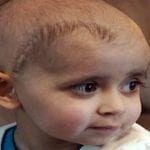
“Cash survived the septic shock, stroke, pulmonary haemorrhage, pulmonary hypertension, all side effects of the chemotherapy and bone marrow transplants he had received. We were told after his 4th cardiac arrest episode he would have brain damage, organ failure and that he would ultimately die.
However, he did not die, and it was because of the cannabinoid therapeutics that he was receiving and their Antioxidant and Neuroprotectant capabilities.”
Unfortunately, despite chemotherapy and Cannabis Oil, his tumour returned when he was four and sadly was fatal.
Many parents have opted to supplement and in some cases replace traditional treatments with cannabis oil, and many have had positive results.
In some cases, it has only been effective as palliative care and has not reversed cancer. In other cases, such as Mykayla’s, it has been successful and the children are now cancer-free.
It is a difficult choice for many parents where cannabis medication is still illegal, however, cannabis can be safely and discreetly taken alongside pharmaceutical treatments and has proved effective in many cases.
Children and Medical Cannabis treatment for ADHD
Whilst few clinical trials have been undertaken medical marijuana shows promise in treating ADHD. ADHD is commonly treated with central-nervous-system stimulants or, less commonly, non-stimulants that affect norepinephrine and/or dopamine levels, and behavioural therapy.
ADHD drugs often have undesirable side effects including stunted growth, loss of appetite, sleep problems, headaches, stomach pains, tics, and emotional extremes. L. Alan Sroufe, a professor emeritus of psychology at the University of Minnesota’s Institute of Child Development, stated in the New York Times:
“Attention-deficit drugs increase concentration in the short term, which is why they work so well for college students cramming for exams. But when given to children over long periods of time, they neither improve school achievement nor reduce behaviour problems.”
To date, no study has found any long-term benefit of attention-deficit medication on academic performance, peer relationships or behaviour problems, the very things we would most want to improve.”
Dr. Lester Grinspoon is Associate Professor Emeritus of Psychiatry at Harvard Medical School, is a fellow of the American Association for the Advancement of Science and the American Psychiatric Association,.and author of ‘Marijuana: The Forbidden Medicine,’ stated in a recent interview:
“I’d have no hesitation giving a youngster with ADHD a trial of oral marijuana. For some kids, it appears to be more effective than traditional treatments. Marijuana certainly has fewer potential dangers than Ritalin.”
A Californian mother who wishes to remain anonymous recently spoke of her experience with cannabis and ADHD. She had struggled to control and understand her son’s behaviour since the age of six, but staunchly refused to follow her doctor’s recommendation that he be prescribed the pharmaceutical drug Ritalin. She stated:
“My son was diagnosed with ADHD when he was 6. He was hyperactive and had trouble in school, but we didn’t want to put him on Ritalin. There were too many side effects. When he got to high school, I suddenly noticed that he’d calmed and could concentrate. I couldn’t figure it out. Then he told me that he’d started smoking pot.”
David Bearman, MD, is one of the most clinically knowledgeable physicians in the U.S. in the field of medicinal marijuana. He has spent 40 years working in substance and drug abuse treatment and prevention programs. His career includes medicine, provision of primary care, pain management and cannabinology.
“Cannabis appears to treat ADD and ADHD by increasing the availability of dopamine. This then has the same effect but is a different mechanism of action than stimulants like Ritalin (methylphenidate) and Dexedrine (1) amphetamine which act by binding to the dopamine and interfering with the metabolic breakdown of dopamine. Cannabis (THC) is an anandamide agonist that is it stimulates the anandamide (CB1) receptor sites.”
Dr Bearman hypothesizes that the anandamide-sometimes called the “bliss chemical”-slow down the rate of neurotransmission and that stimulating anandamide receptors also stimulates Renshaw cells, which turn off some cells that provide sensory input and recommends treating children with cannabis medications to medicate ADHD.
The overall effect would be to increase the ability to regulate behaviour and reduce the overstimulation that causes ADHD brains to become distracted.
Children and Medical Cannabis Treatment for Autism
There has been increased interest in the benefits of cannabis-based treatments for autism.

There are several accounts of infants with autism and similar disorders finding life-changing relief from parents understanding the needs of children and medical marijuana treatment.
The most obvious signs of autism surface between ages 2 and 3, so groups like the Organization for Autism Research have been funding research efforts to help detect autism at earlier ages, as early diagnoses may improve the effectiveness of treatment options including cannabis-based medications. There is a great deal of evidence supporting the theory that autism is increasing exponentially due in part to man-made poisons that are emitted into the environment.
Basically toxic pollution from industry and petrochemical fuels. “By 2032, one in two children will have an autism spectrum disorder. The risk of autism for a child born today is one in twenty-five at least. Maternal exposure to air pollution contributes to the risk of autism spectrum disorders,” said Marc Weisskopf, associate professor of environmental and occupational epidemiology and senior author of a detailed study into causes of autism.
“The specificity of our findings for the pregnancy period, and third trimester, in particular, rules out many other possible explanations for these findings.”
Mieko Hester-Perez is the founder of the Unconventional Foundation for Autism, advisory board member to Cannabis Science.
Her son is Joey, the boy for which Aaron Justis of Buds and Roses Collective and cultivator Kyle Kushman developed Joey’s Strain for both children and medical marijuana users alike. Hester-Perez discovered the many benefits of children and medical marijuana use when Joey, who has autism, was later diagnosed with Duchenne’s muscular dystrophy, a rare and aggressively degenerative muscular disorder.
He was given six months to live, and in that time, would need to take a cocktail of pharmaceutical medications, all of which have a severe degree of documented toxicity. At the time, he was already taking up to 13 different medications each day. After researching, Hester-Perez was advised to try cannabis. Curious, she experimented with giving her son cannabis-infused edibles.
Soon after, Joey began making consistent eye contact which is always a struggle for children with autism. The edibles seemed to stimulate his appetite and he put on weight. Six years after that six-month-terminal diagnosis, Joey is still happy, sociable and thriving.
CBD dosage for children
Guide to children’s dosing with Medical Cannabis.
When treating children ensure you administer two hours apart from pharmaceutical medications and combine with a high fat snack to aid absorption. Try to be consistent with the cannabis plant strains you choose to make or purchase your child’s oil. Rectal dosing has been found helpful when wishing to avoid any psychoactive reaction if digestion is problematic, or when using cannabis in relation to children and Medical Cannabis medications. Oils can be administered by syringe into the mouth or preferably onto a medium such as a biscuit, in capsules but also through G-Tubes. A gastrostomy tube (G-tube) is a tube inserted through the abdomen that delivers nutrition directly to the stomach. Use a clean syringe with each dose to avoid any possible contamination.
First week
This applies to both CBD and full spectrum cannabis oil and gradually introduces the cannabinoids into the system over the course of 1 month. The aim is to be ingesting 1 gram of oil by the end of week 4. There will be a psychoactive effect from the full spectrum oil and suppository administration is a better alternative if wishing to avoid the psychoactive effect.
- Mix 1 gram of cannabis oil with 20 grams of organic extra virgin (first press) olive oil. This mixture gives a ratio of 1/20g (0.05g) or 50mg cannabis oil per 1 gram of mixed oil.
- Draw the mixture into a plastic syringe (available online). Apply 1 gram of this mixed oil onto a biscuit or cracker.
- To accurately measure your dosage use an inexpensive jewellers electronic digital scale (available online) they generally measure 0.01g-200g.
- Place the medium (biscuit, cracker, toast) onto the scales first and re-zero by pressing the zero button. Add the oil until 1 gram of your oil mixture has been dispensed onto the medium.
- Dosage: Eat twice a day, morning and evening. This equates to 0.1 gram of oil (2 x 0.05g)
If making capsules or suppositories thoroughly mix 1 gram of cannabis oil into 20 grams of warmed organic coconut oil. Draw into a plastic syringe and fill capsules whilst the mixture is cool but still workable.
- Dosage: Administer 1 capsule twice a day, morning and evening. This equates to 0.1 gram of oil (2 x 0.05g)
Empty capsules are available to purchase online. A size ’00’ capsule holds approximately 1 gram of mixed oil. Place the capsule on the digital scales and re-zero as above. Fill with one gram using the plastic syringe.
Week Two
- Reduce the dilution to 1/10g by mixing 1 gram of cannabis oil into 10 grams of extra virgin olive oil or for capsules use coconut oil.
- This will safely up the dosing to (0.1gram) or 100mg cannabis per gram of oil.
- Dosage: Take twice a day to increase saturation to (0.2gram) or 200mg of cannabis oil a day.
- Continue reducing the dilution and increase steadily over the following two weeks.
- Within the first month 1 gram a day of cannabis oil should be tolerable and will be the standard dosage. (0.5 gram) x twice a day – 1gram.
Further reading
How and where to safely buy RSO medical cannabis oil online
Introduction to Medical Cannabis
If you need any advice or help regarding children and Medical Cannabis please use the contact form provided. We try to answer all emails within 24 hours and are happy to help and advise on all aspects of Medical Cannabis treatments in complete confidence.
Help and Advise
If you need advice or help with Medical Cannabis, please use the contact form provided. We try to answer all emails within 24 hours and are happy to help and advise on all aspects of medical cannabis treatments in complete confidence.
Disclaimer: Please note that whilst we consider ourselves subject matter experts regarding medical cannabis, we are not medical professionals. We are an information resource and there is still limited evidence that medical cannabis can cure all the illnesses we discuss here. We recommend you do as much research as possible, and where practical seek professional medical advice before proceeding with Medical Cannabis oil.
